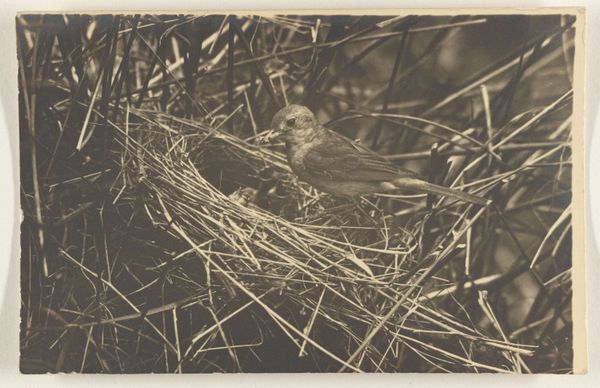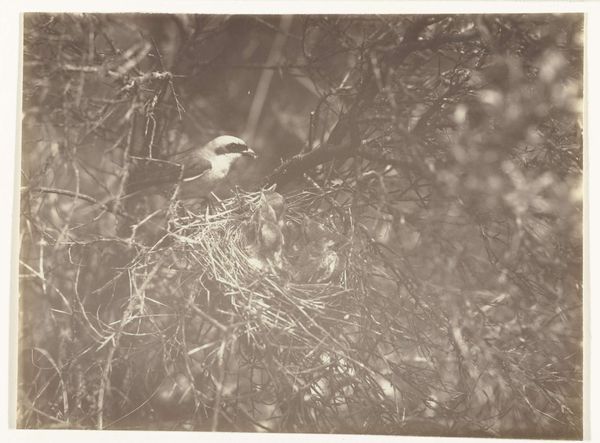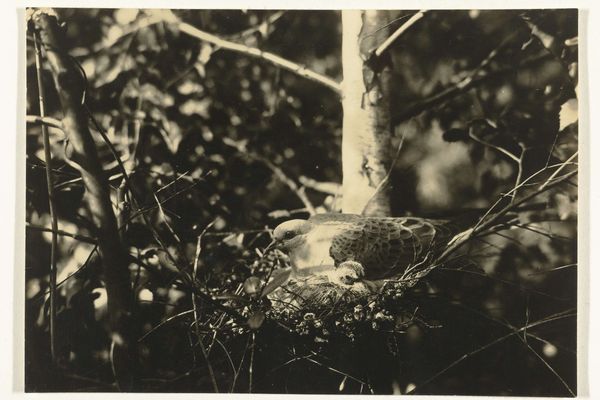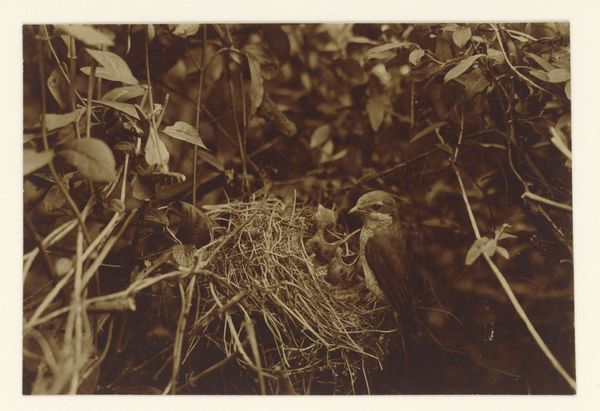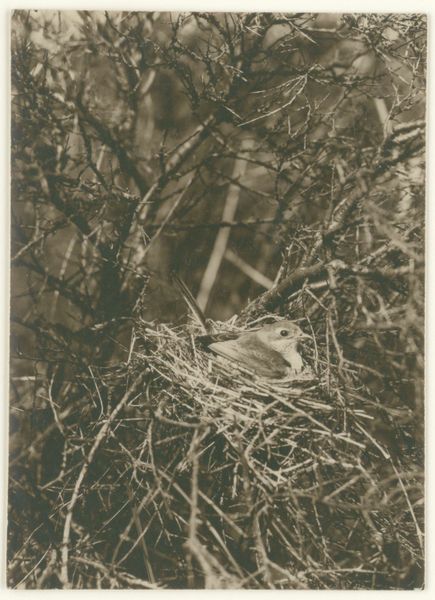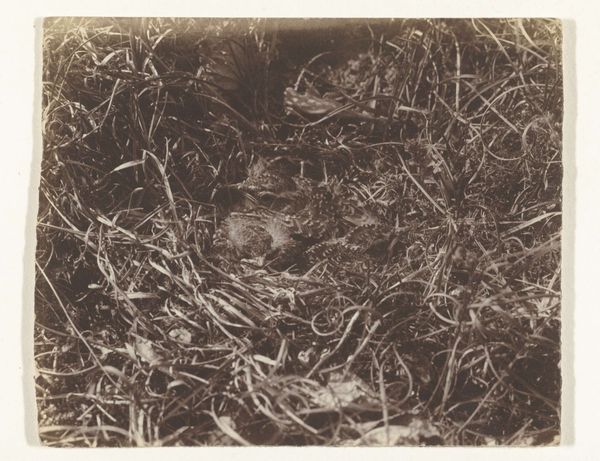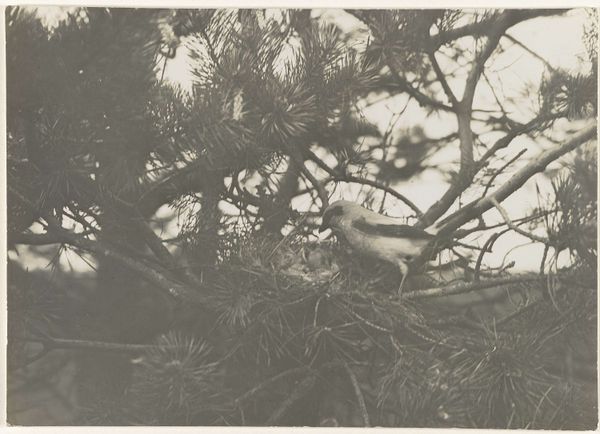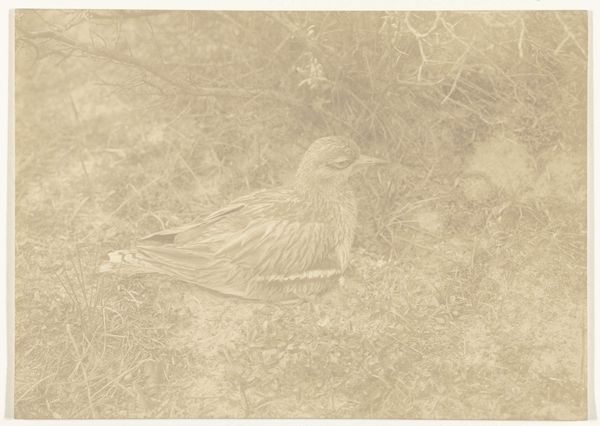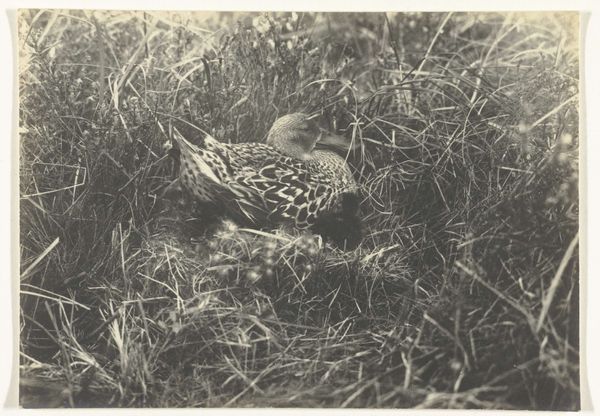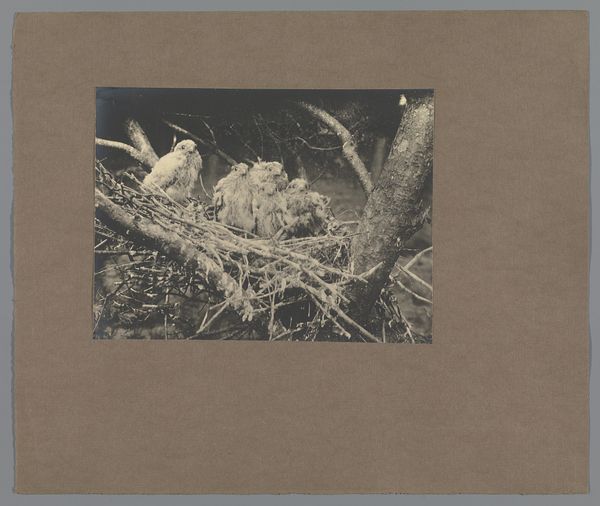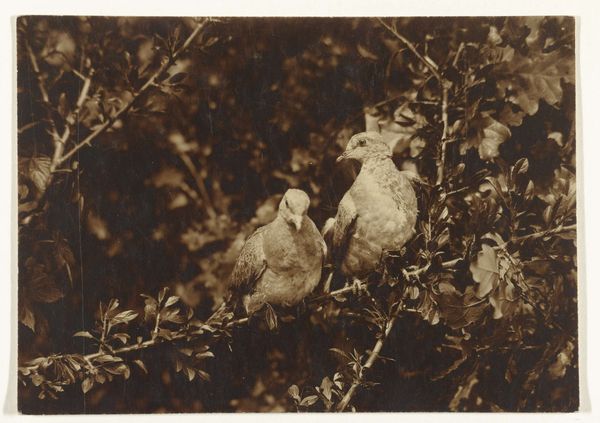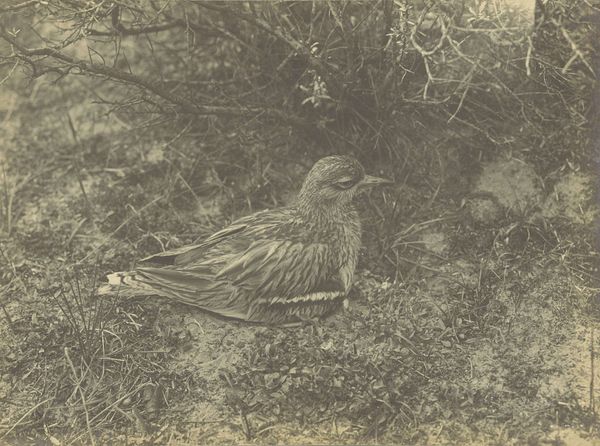
photography, gelatin-silver-print
#
organic
#
portrait
#
still-life-photography
#
organic
#
organic shape
#
landscape
#
bird
#
natural colouring
#
photography
#
gelatin-silver-print
Dimensions: height 124 mm, width 87 mm
Copyright: Rijks Museum: Open Domain
Editor: Here we have Richard Tepe's gelatin silver print, "Vogel bij nest met kuikens in boom," or "Bird by nest with chicks in tree," dating from around 1900 to 1940. It’s a very intimate portrait of a bird tending to its young. How do you interpret this work, especially given its historical context? Curator: Considering the time this photograph was taken, and thinking about feminist perspectives, I find it intriguing how it captures a potent image of motherhood and care. During this period, representations of women were often limited and highly controlled. I see this image of the bird tending its nest, its "house," its home as an important intersection between human and animal experiences. This image challenges the way we frame labor, care, and visibility. What about you? Does this challenge traditional roles and representations, or reinforce them? Editor: That's a very interesting point. The bird *is* performing essential, life-sustaining work. I initially just saw a sweet nature scene, but you’re right, viewing it through the lens of labor and gender… Curator: Exactly! The bird’s protective stance, the vulnerability of the chicks. It brings forth discussions on maternal labor and challenges to restrictive gendered depictions. Can we read into this photograph ideas around domesticity or private vs. public roles through this depiction? Editor: It definitely prompts you to think beyond the surface. I see now that this piece is not just an illustration of nature but also a photograph ripe for interpretation. It allows conversations about representation, care and challenging the usual tropes that surround these concepts. Thanks, I learned a lot! Curator: And I have been delighted to explore it with you, to observe our present readings through historical and cultural notions. The work, indeed, has spoken, opening dialogue through various times and views.
Comments
No comments
Be the first to comment and join the conversation on the ultimate creative platform.
